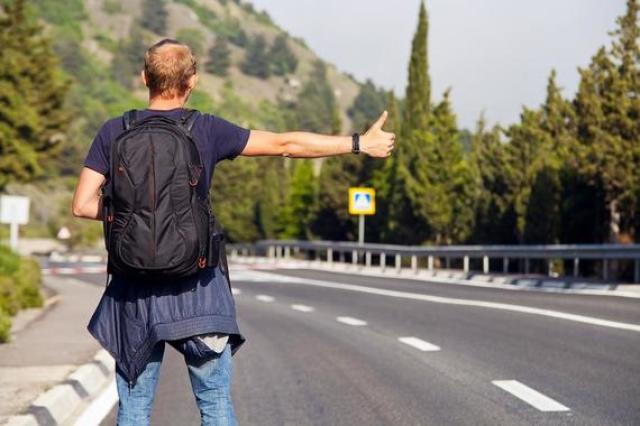Hitchhiking , also known as thumbing or hitching, is a means of transportation that is gained by asking individuals, usually strangers, for a ride in their car or other vehicle. The ride is usually, but not always, free.
Nomads have also used hitchhiking as a primary mode of travel for the better part of the last century, and continue to do so today.
Hitchhikers use a variety of signals to indicate they need a ride. Indicators can be physical gestures or displays including written signs. The physical gestures use differ around the world:
1. In some African countries, the hitchhiker's hand is held with the palm facing upwards.
2. In most of Europe, North America, and the United Kingdom, most hitchhikers stand with their back facing the direction of travel. The hitchhiker typically extends their arm towards the road with the thumb of the closed hand pointing upward or in the direction of vehicle travel.
3. In other parts of the world, such as Australia, it is more common to use the index finger to point at the road.
In 1971, during the Vietnam War, drivers invented methods to communicate various messages to hitchhikers who are frequently soldiers in those areas of the U.S. near military bases. To indicate to a hitchhiking soldier that their vehicles have no additional space to accommodate them, drivers could tap on the vehicle roof. Another common message that drivers could signal to hitchhikers—who usually sought to travel long distances, distances too far to walk in a reasonable amount of time—was that the driver's destinations were located nearby—and of little use to the hitchhiker—by pointing at the ground for a few seconds.

